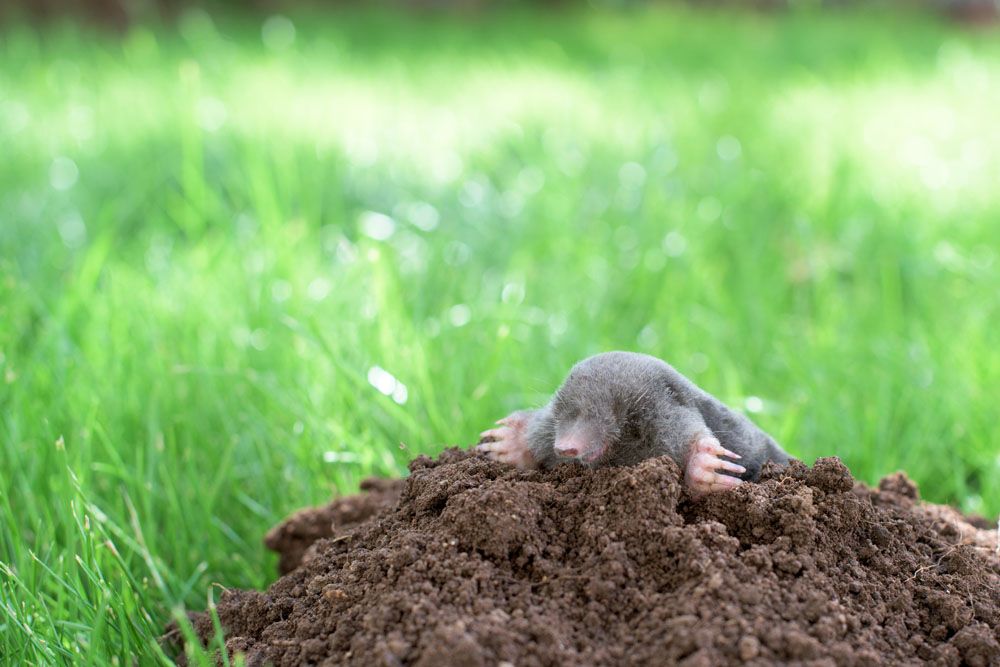
Moles
Moles Weeds: How to Control and Prevent Moles in the Garden
You know you have a mole when you observe a sequence of 3- to 5-inch circular, elevated ridges running over the surface of your grass, accompanied by small volcanoes of soil. Because their digging destroys any vegetation in their path, these little creatures may do a lot of harm in a short amount of time. Because they kill roots as they dig into the dirt, the ridges of their tunnels soon turn brown. Moles, on the other hand, help aerate the soil while also consuming harmful insects. Here’s what you need to know if you need to get rid of moles in your lawn before they do major harm.
What are Moles?
Moles are carnivores who spend most of their life underground by themselves. They dig up to 18′ every hour, day and night, in quest of food. Moles eat mostly worms, although they also eat slugs, ants, snails, caterpillars, and beetles. They use their deadly saliva to immobilize their prey and then transfer the still-living victim underground for later devouring. Moles build chambers for food storage in their underground tube networks. While their tunneling aerates your soil, it can result in higher ridges of grass, which destroys the root structure and causes turf, plants, and flowers to wither and die.
Signs and Symptoms
Moles create unattractive mounds or ridges while digging into the soil in quest of food. The digging activity uproots plants and destroys roots, and the mounds offer a breeding ground for weed seeds. While moles are frequently blamed for the loss of bulbs, seeds, and garden plants, the majority of the damage is performed by several kinds of mice and voles that may occupy or use mole tunnels. Plant material is rarely consumed by moles.
Moles dig tunnel systems under the soil’s surface. Many of them are constructed after rains when the mole is looking for fresh food sources and are rarely re-used from day today. Moles also build mounds of soil on the grass by pushing up soil and digging deeper, permanent passages, and nesting holes. Mating takes place in the spring, and a single yearly litter of 2 to 5 young is born in March, April, or the first week of May. Infestations of 2 to 3 moles per acre are considered high.
Prevention and Control
Because it lives underground, a mole might be difficult to remove. Repellents, poisons, and fumigants are all choices, but they should be avoided if you have kids and pets who may get exposed. Plants can be protected against moles by excavating a 2-foot trench, enclosing it with wire mesh, then filling it with dirt and a plant. Digging a trench around a tiny garden might also be useful. Because moles consume grubs, eradicating grubs with natural therapies such as milky spore disease or helpful nematodes can help lower your mole population.
Moles may be discouraged from invading your lawn if you use proper trimming techniques. Mow in a different direction each time you mow your grass. This promotes your grass to stand upright, preventing it from laying down and providing an ideal habitat for moles. Moles are also inhibited from invading your lawn if it is kept at the height of 2 inches (5 cm). Spraying a castor oil-based solution over a mole’s tunnels and tunnel entrances can help drive a mole away. If everything else fails, a mole-specific trap can be used to successfully kill your mole. Set the trap according to the package directions and move it about your lawn until the mole is caught.
